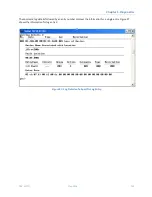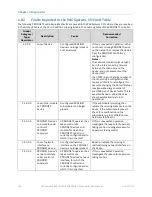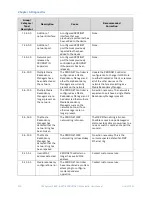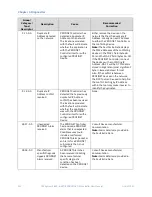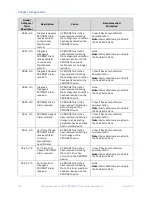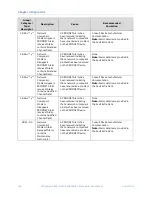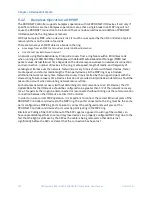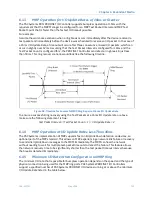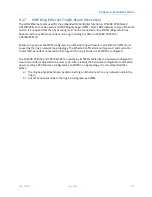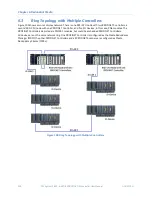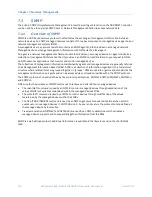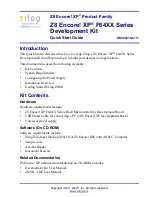
Chapter 6. Redundant Media
128
PACSystems* RX3i & RSTi-EP PROFINET IO-Controller User Manual
GFK-2571N
6.1
PROFINET Media Redundancy Protocol
PROFINET Media Redundancy Protocol (MRP) supports devices configured in a ring topology with a maximum
of 1 Manager and 63 Clients. It is based on the functions of IEC 62439. Media Redundancy Protocol may not be
routed between different IP subnets.
Each device within a Redundant Media network has at least two physical pathways to two other devices on the
network. To connect to the ring, each device requires an integrated switch with at least two external ports
(ring ports) that support Media Redundancy Protocol. Devices that are not MRP-capable can be connected to a
device like an MRP-capable switch in the ring, but they cannot be in the ring themselves. The redundant paths
extend only to the devices on the ring that are MRP-capable and enabled.
One of the devices on the ring must be configured as the Media Redundancy Manager (MRM), and all the other
devices must be configured as Media Redundancy Clients (MRCs).
The Media Redundancy Manager disables one of the segments of the ring so that a loop is not created in the
network. To disable a segment, the Media Redundancy Manager either:
•
blocks one of its two Ethernet switch ports used to form the ring when the ring is closed, or
•
forwards both switch ports if one of the other ring segments is missing (ring open) and passes messages
through the Media Redundancy Manager to get to devices on the other side of the failed segment.
The PROFINET Controller can be used as either a Media Redundancy Manager or Client. The PNS can be used as
a Media Redundancy Client.
Typically, one PROFINET Controller module in each ring I/O network is configured as the media redundancy
manager. All other nodes in the ring (I/O Devices, network switches, and other PROFINET Controllers) must be
configured as media redundancy clients.


